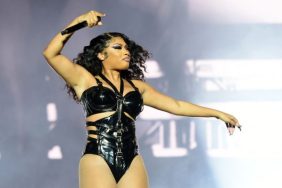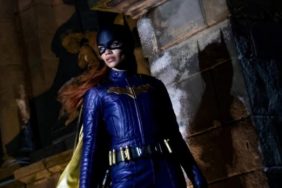Kenneth Branagh is no stranger to adapted classic literature, but usually he has a little more to work with than he does in Cinderella. Compared to the rich texts of Hamlet, Much Ado About Nothing or Mary Shelley’s Frankenstein, a timeless fairy tale about an unloved stepdaughter whose fairy godmother sneaks her into a royal ball is undeniably a little on the light side.
But that doesn’t mean that Branagh didn’t take this new live-action Cinderella seriously, or put copious amounts of thought into the elements of the original animated Disney classic he kept in, and which ones he changed for contemporary audiences. I sat down with Kenneth Branagh to discuss the thought process behind these changes, big and small (and nonexistent), and why it was important to feature more of the male characters without losing focus on the story’s heroine.
Cinderella opens in theaters everywhere on March 13, 2015.
Check Out: ‘Cinderella’ Review: It’s a Ball!
CraveOnline: What struck me the most about Cinderella is that you managed to maintain the simplicity of the original story while still making it seem like a rich feature film.
Kenneth Branagh: Great. Great.
Was that a concern, that you could overdo it and add too much?
Sure. Yeah, I mean just if you look at the visual palette of it, as it is we’re a pretty rich movie, and one was forever trying to find the less is more touch to get the best value out of all the richness you did have. Hence a gold coach instead of a glass coach. There’s a glass slipper already. You’re going to be in a frame with four big white horses, there’s a lot going on.
My experience of great storytelling, working with classics, is just finding a way to present it simply but let the story do its own work, or be an invite to the audience’s imagination. With stories like this the personal relationship with something like a fairy tale – and Cinderella in particular – is so intense that basically it’s trying to find that classical approach that releases the story. Basically releases it, but releases it over to you in the audience as opposed to doing too much that is potentially my confining idea about what it is. So there’s more in it than I can possibly understand.
You talk about the personal connection. I assume you mean what audiences are bringing to it.
Yeah, yeah. They’re very proprietorial about it, very concerned about… When I first told people I was doing it they said, “Are the mice in it? Is Gus Gus there?” I said, “Yeah…” Or at least I began to realize that Gus Gus had to be there.
You just grabbed the script and wrote “Gus Gus” in there all of a sudden.
Gus Gus is in now. That was just clearly very intentionally felt by numbers of people. So I just felt the very personal relationship people had to it, but also just as perhaps a classic tale of an underdog, or an outsider. It was something that meant something to people. They want her to succeed because that means they can succeed.
Didn’t Disney say that this was his favorite, Cinderella?
I believe that that was the case, yeah.
So that’s a heavy thing for Disney to hand you!
[Laughs.]
That’s a lot of responsibility. Was there a lot of input? Did the castle have to look “just so?”
No, in fact quite the opposite. The castle is actually quite an interesting example because obviously the castle from the original movie made it into the theme parks.
It’s the Disney logo, isn’t it?
Yeah! So it couldn’t be more sort of in the DNA. But in fact the invitation was to depart from that within what you might call a classical framework. So we didn’t go for Ludwig’s castle, which is what that’s based on, but castles from Vienna and Versailles where there’s a slightly more militaristic, possibly more masculine edge to them. Because I certainly wanted to bring men into it a bit more.









